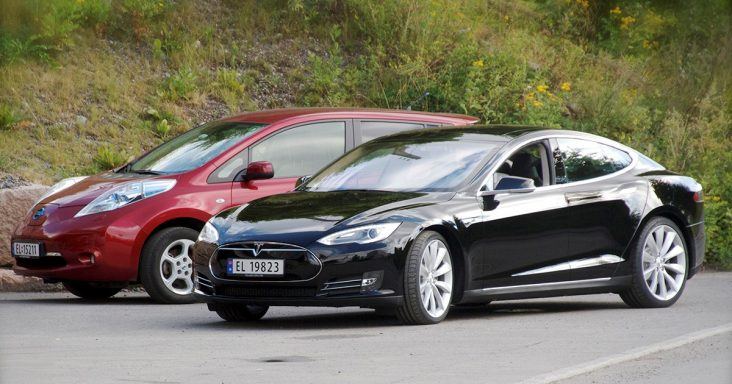Electric vehicles slow to gain market share in U.S.
by May 23, 2018 2:25 pm 180 views

Photo credit: Norsk Elbilforening
Electric vehicles, including hybrid and battery-powered vehicles, have been slow to gain market share in the United States, according to the U.S. Energy Information Administration. Between 2012 and 2017, electric vehicles have accounted for between 2.5% and 4% of all vehicles sales as the number of available models of electric vehicles increased from 58 to 95.
Hybrid electric vehicles have accounted for the largest share of electric vehicles, but the share of those vehicles has declined as sales have risen for plug-in hybrid electric and battery electric vehicles.
Since 2012, sales of battery electric vehicles have risen the most and accounted for 0.6% of 2017 sales. Between 2012 and 2017, the percentage of vehicle sales of plug-in hybrid electric vehicles rose from 0.1% to 0.5%. Over the same period, the percentage of vehicle sales of hybrid electric vehicles that don’t plug in declined from 3% to 1.9%, according to Wards Automotive.
The slow growth in electric vehicles sales was attributed to low gasoline prices, improved fuel economy of conventional vehicles and high electric vehicle prices, especially the plug-in hybrid electric and battery electric vehicles, despite the availability of federal and state incentives, according to the EIA. Also, the limited charging infrastructure for plug-in vehicles has impacted sales growth.
Households that own battery electric vehicles and plug-in hybrid electric vehicles own 2.7 vehicles compared the average household, which owns 2.1 vehicles, according to the 2017 National Household Travel Survey conducted by the U.S. Department of Transportation. Battery electric and plug-in hybrid electric vehicles are used about 12% less than other vehicles, based on annual mileage per vehicle.
Two-thirds of households with battery electric and plug-in hybrid electric vehicles have annual incomes of more than $100,000, and 3% of households that own the vehicles have annual incomes of less than $25,000. About one-third of all households have annual incomes of more than $100,000, and 16% of all households have annual incomes of less than $25,000.
